PCB-153
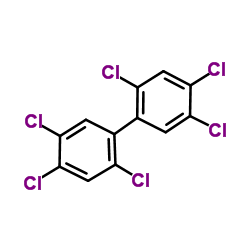
PCB-153 structure
|
Common Name | PCB-153 | ||
|---|---|---|---|---|
| CAS Number | 35065-27-1 | Molecular Weight | 360.878 | |
| Density | 1.6±0.1 g/cm3 | Boiling Point | 396.2±37.0 °C at 760 mmHg | |
| Molecular Formula | C12H4Cl6 | Melting Point | 103-104ºC | |
| MSDS | Chinese USA | Flash Point | 193.2±23.9 °C | |
| Symbol |


GHS08, GHS09 |
Signal Word | Warning | |
| Name | 2,2',4,4',5,5'-hexachlorobiphenyl |
|---|---|
| Synonym | More Synonyms |
| Density | 1.6±0.1 g/cm3 |
|---|---|
| Boiling Point | 396.2±37.0 °C at 760 mmHg |
| Melting Point | 103-104ºC |
| Molecular Formula | C12H4Cl6 |
| Molecular Weight | 360.878 |
| Flash Point | 193.2±23.9 °C |
| Exact Mass | 357.844421 |
| LogP | 6.83 |
| Vapour Pressure | 0.0±0.9 mmHg at 25°C |
| Index of Refraction | 1.627 |
| InChIKey | MVWHGTYKUMDIHL-UHFFFAOYSA-N |
| SMILES | Clc1cc(Cl)c(-c2cc(Cl)c(Cl)cc2Cl)cc1Cl |
| Storage condition | 2-8°C |
| Stability | Thermally stable and resistant to both oxidation and biological degradation. |
CHEMICAL IDENTIFICATION
HEALTH HAZARD DATAACUTE TOXICITY DATA
MUTATION DATA
|
| Symbol |


GHS08, GHS09 |
|---|---|
| Signal Word | Warning |
| Hazard Statements | H373-H410 |
| Precautionary Statements | P273-P391-P501 |
| Personal Protective Equipment | Eyeshields;Gloves |
| Hazard Codes | F: Flammable;Xi: Irritant;N: Dangerous for the environment;Xn: Harmful; |
| Risk Phrases | R11 |
| Safety Phrases | 16-26-33-36-61-60-35-62-29-9 |
| RIDADR | UN 2315 |
| Packaging Group | II |
| Hazard Class | 9 |
| HS Code | 2903999090 |
| Precursor 7 | |
|---|---|
| DownStream 10 | |
| HS Code | 2903999090 |
|---|---|
| Summary | 2903999090 halogenated derivatives of aromatic hydrocarbons VAT:17.0% Tax rebate rate:9.0% Supervision conditions:none MFN tariff:5.5% General tariff:30.0% |
|
Cross-omics gene and protein expression profiling in juvenile female mice highlights disruption of calcium and zinc signalling in the brain following dietary exposure to CB-153, BDE-47, HBCD or TCDD.
Toxicology 321 , 1-12, (2014) The present study assessed if eating a diet of fish, spiked with persistent organic pollutants (POPs), affects gene and protein expression in the maturing mouse brain. Juvenile female Balb/c mice (22 ... |
|
|
Associations of accumulated exposure to persistent organic pollutants with serum lipids and obesity in an adult cohort from Southern Spain.
Environ. Pollut. 195 , 9-15, (2014) The aim of this research was to study the association of the accumulated human exposure to persistent organic pollutants with serum lipid levels and obesity, in a cohort of 298 adults. In the multivar... |
|
|
Temporal dynamics of circulating persistent organic pollutants in a fasting seabird under different environmental conditions.
Environ. Sci. Technol. 46(18) , 10287-94, (2012) Temporal dynamics of persistent organic pollutants (POPs) were examined in fasting common eider (Somateria mollissima) females in one subarctic (68° N; over 5 years) and one high arctic colony (78° N;... |
| 2,2',4,4',5,5'-heptachlorobiphenyl |
| PCB 153 |
| 2,2',3,3',5,6'-HEXACHLOROBIPHENYL |
| HCBP |
| biphenyl, 2,2’,4,4’,5,5’-hexachloro- |
| CB-153 |
| 2,2',4,4',5,5'-Hexachloro-1,1'-biphenyl |
| 2,2',4,4',5,5'-PCB |
| 1,1'-Biphenyl,2,2',4,4',5,5'-hexachloro |
| 2,2',4,4',5,5'-Hexachloro-1,1'-biphenyl (9CI) |
| PCB-153 |
| Biphenyl, 2,2',4,4',5,5'-hexachloro- |
| 2,2',4,4',5,5'-Hexachlorobiphenyl |
| 1,1'-Biphenyl, 2,2',4,4',5,5'-hexachloro- |
| 1,2,4-trichloro-5-(2,4,5-trichlorophenyl)benzene |
| 2,4,5,2',4',5'-Hexachlorobiphenyl |
| 2,2',4,4',5,5'-hexachloromobiphenyl |
| 2,2′,4,4′,5,5′-Hexachlorobiphenyl |
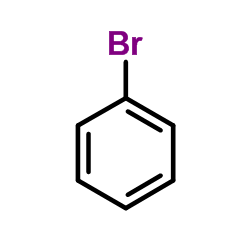 CAS#:108-86-1
CAS#:108-86-1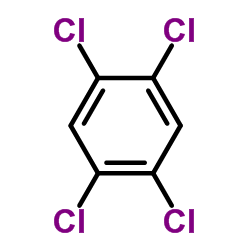 CAS#:95-94-3
CAS#:95-94-3 CAS#:7145-82-6
CAS#:7145-82-6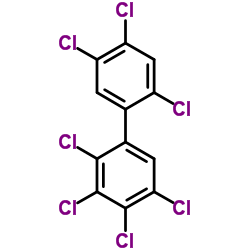 CAS#:35065-29-3
CAS#:35065-29-3 CAS#:636-30-6
CAS#:636-30-6 CAS#:120-82-1
CAS#:120-82-1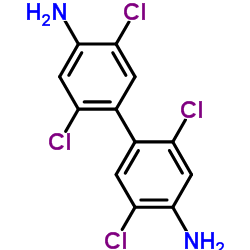 CAS#:15721-02-5
CAS#:15721-02-5 CAS#:35694-08-7
CAS#:35694-08-7 CAS#:51207-31-9
CAS#:51207-31-9 CAS#:92-52-4
CAS#:92-52-4 CAS#:92-51-3
CAS#:92-51-3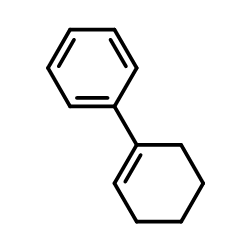 CAS#:771-98-2
CAS#:771-98-2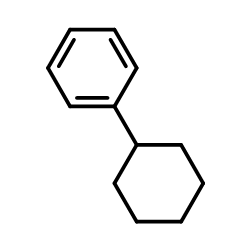 CAS#:827-52-1
CAS#:827-52-1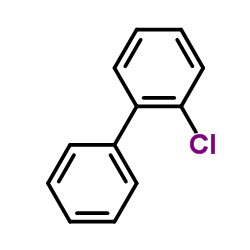 CAS#:2051-60-7
CAS#:2051-60-7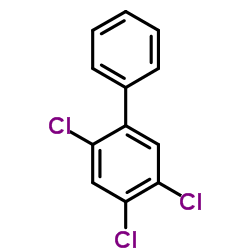 CAS#:15862-07-4
CAS#:15862-07-4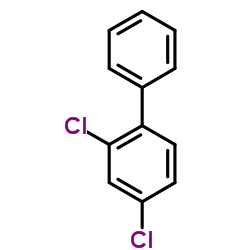 CAS#:33284-50-3
CAS#:33284-50-3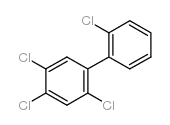 CAS#:70362-47-9
CAS#:70362-47-9
